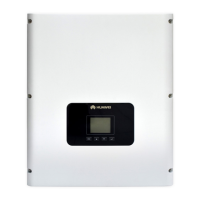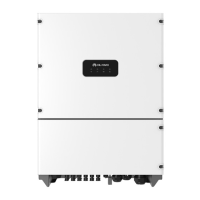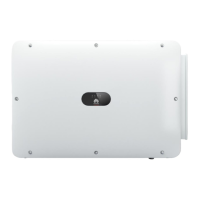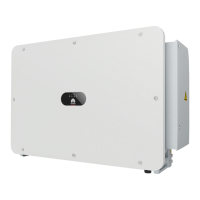● The cable diameter must comply with local cable standards.
● The factors that aect cable selection include the rated current, cable type, routing
mode, ambient temperature, and maximum expected line loss.
Table 5-2 Cable description (S indicates the conductor cross-sectional area of the AC output cable,
and S
p
indicates the conductor cross-sectional area of the PE cable)
No. Cable Type Conductor
Cross-Sectional
Area
Outer
Diameter
Source
1 DC input
power cable
PV cable that meets
the 1500 V standard
4–6 mm
2
5–7.8 mm Prepared by
the
customer
2 RS485
communicat
ions cable
Outdoor shielded
twisted pair cable that
meets the local
standard
0.25–1 mm
2
● One or
two
communi
cations
cables: 4–
11 mm
● Three
communi
cations
cables: 4–
8 mm
Prepared by
the
customer
3 PE cable Single-core outdoor
copper cable and M10
OT/DT terminal
S
p
≥ S/2 - Prepared by
the
customer
4 Tracking
system
power cable
Three-core outdoor
copper cable with two
layers of protection
and M4 OT terminal
10 mm
2
15–18 mm Prepared by
the
customer
5 AC output
power cable
(single-core)
(Recommended)
Single-core outdoor
cable and M12 OT/DT
terminal
● Copper cable:
– S: 120–150
mm
2
– S
p
≥ S/2
● Aluminum
alloy cable or
copper-clad
aluminum
cable:
– S: 150–400
mm
2
– S
p
≥ S/2
14–40 mm Prepared by
the
customer
SUN2000-(250KTL, 280KTL, 300KTL, 330KTL) Series
User Manual 5 Electrical Connections
Issue 07 (2023-06-30) Copyright © Huawei Technologies Co., Ltd. 43

